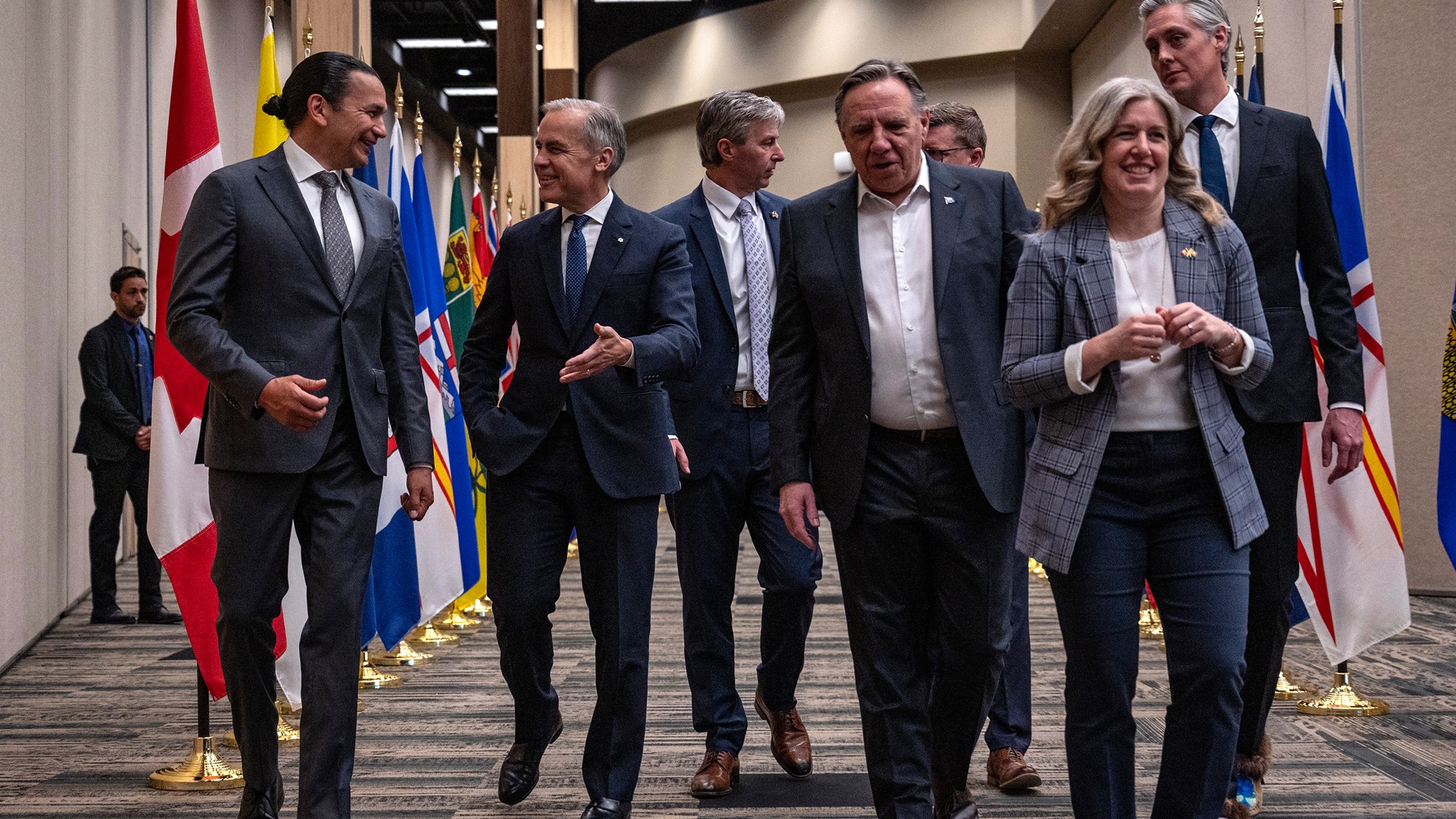
Calls by Senators Hillary Clinton and Barack Obama for a renegotiation or opting out of NAFTA have prompted understandable concern in Canada, and presumably in Mexico as well. These have been inflamed in Ottawa by unfortunate ”œleaks” ”” inadvertent or otherwise ”” including one of a diplomatic report suggesting that an advis- er to Senator Obama had described this campaign rhetoric as ”œpolitical positioning.” Perversely, as Canadians scrambled to circle the wagons against the threat, many turned their guns inward. In a rush of self-flagellation, some politicians moved vigorously to support Obama and his perceived outrage, gain- ing perhaps their Andy Warhol 15 minutes of American media fame but completely losing sight of the core concern ”” the rising anti-NAFTA sentiments in the United States.
We have seen this movie before. In the 1992 presidential campaign, then-Governor Clinton pledged to renegotiate NAFTA. In Canada’s 1993 election, the opposition Liberals under Jean Chrétien campaigned against NAFTA. When both leaders were ultimately elected to office, they embraced the agreement, accepted side agreements on labour and the environment and, in the case of President Clinton, fought hard to gain congressional approval. No wonder we need first to consider whether and how campaign rhetoric may be tem- pered by the reality of government.
Unquestionably, NAFTA has become a convenient whipping boy for all that ails the US manufacturing sector these days, even though the competitive pressures stem more from technology and from emerging powers such as China and India than from trade with either of America’s neighbours. But protectionist pandering is the lifeblood of American politics, especially during elections and even more so when the economic prospects in the United States are as gloomy as they seem today.
NAFTA is getting a bum rap. The agreement has done, more or less, what it was intended to do. Since NAFTA came into force in 1994, US exports to Canada have increased by two and a half times and US exports to Mexico have more than trebled. Companies involved in trade are not only more productive but tend to pay higher wages. Between 1993 (the year before NAFTA) and 2006, all three economies have grown by roughly 50 percent. NAFTA has contributed significantly to this growth. Intra-firm trade now com- mands more than 70 percent of total trade between Canada and the US. Employment levels in all three coun- tries have seen a positive trajectory; the US alone added more than 25 mil- lion jobs in the past 14 years. Real median household incomes in the US are up by one-third in the same period. In short, the theory of trade liberaliza- tion has worked. NAFTA has proven to be mutually beneficial stimulating eco- nomic growth and increasing produc- tivity. Attempting to unravel these benefits would be a colossal and costly blunder for the US.
But facts do not always counter emotions and, for those who have lost their jobs, statistics can be meaning- less. Combined with the rising angst in America about illegal Mexican immi- gration ”” something NAFTA was expected to alleviate ”” NAFTA is pro- viding easy fodder for attack.
So, what if the rhetoric actually becomes reality and the next US admin- istration proposes a formal re-negotia- tion of NAFTA? Given more immediate challenges that will likely confront the new US president ”” domestic and glob- al ”” it is doubtful that NAFTA will be at or near the top but, assuming it is, what would that portend?
What is evident is that Canada has little reason for panic about the concerns supposedly to be addressed ”” labour and environmen- tal issues, yet again. If anything, US anxiety about these is more likely directed at Mexico, reflecting persist- ent doubts about levels of enforcement. The challenge will be how to elevate enforcement without infring- ing on national sovereignty.
Senator Clinton’s particular con- cern about the dispute resolution mechanism on foreign investment is ironic. While this provision has aroused indignation among some environmental NGOs in both Canada and the US, it was inserted in the NAFTA at the express wish of the US. Investment has traditionally been a top priority for the US in all trade negotiations, with the emphasis on reducing fetters on US investment in other markets.
Canada has concerns of its own about NAFTA, primarily the reluctance of the US to abide by dispute settle- ment decisions on softwood lumber, actions which undermine what is for Canada one of NAFTA’s major princi- ples ”” a sentiment no doubt shared by Mexico. Moreover, the introduction by the US of new fees, new inspection procedures and other border measures ”” all ostensibly in the name of securi- ty ”” seriously impedes efficient flows of people, goods and services, weaken- ing the competitiveness of firms on both sides of the border. These violate blatantly the spirit, if not the letter, of NAFTA and reduce the trade and investment benefits of the agreement to all three countries.
Many point to the energy provi- sions of NAFTA as a potential lever Canada could use effectively in any re- negotiation, especially given our steadily increasing status as America’s largest and most stable supplier of oil and gas. The proportional sharing pro- visions on energy were intended ini- tially to provide greater stability and certainty of supply to both Canada and the US but, undoubtedly, the dramatic development of the oil sands in recent years has tipped the supply capacity on energy very much in Canada’s favour. An interesting dynamic to say the least but, again, certainly not one Canada should fear to discuss and one on which the US may well have more to lose than to gain. Not surprisingly, the current United States trade representa- tive, Susan Schwab, is cautioning that calls to renegotiate NAFTA could ”œbackfire” on US interests.
Notwithstanding elec- tion rhetoric about NAFTA, the anti-foreign mood in the United States should be a matter of concern for Canadians. After all, the sin- gle biggest threat to Canadian prosperity would be a serious outbreak of US protection- ism. Many ingredients are already evi- dent. The US economy is heading downward, mired in fiscal and banking indiscipline, housing foreclosures, $100- plus oil and a severe credit crunch. Americans see themselves increasingly as being unloved in the world, and a lonely America with a sour economy can be a threat in and of itself.
While the tone of the Canada-US relationship has improved of late with a more businesslike approach on some issues, there is little inclination in either capital for bold initiatives. Campaign rhetoric tends to fill the vacuum. The core issue is not so much NAFTA but the need to revitalize the Canada-US relationship.
The most productive periods of our bilateral relations have occurred when Canada had a plan and deployed the resources to achieve its objectives. Having a plan does not mean that we have to ”œgo along to get along.” But it does mean that we have to define Canadian interests and priorities and set realistic goals. What should this plan comprise?
To combat the US protectionist mood and defend our own inter- ests, Canada should look beyond NAFTA. We can address border issues with technologies, procedures and possibly new institutions that would give greater assurance of security while facilitating smoother and more effi- cient movement of goods, services and people. We could move dramatically to harmonize a host of standards and reg- ulations that serve no useful purpose other than to impede efficiency and productivity. A new institution might be considered to ensure more consis- tent attention to blockages at the bor- der and to serve as a safety valve to contain, if not resolve, disputes.
We should tackle the energy and environmental nexus jointly with commitments to reduce greenhouse gas emissions that would be imple- mented in a manner that does not jeopardize responsible development and delivery of our substantial energy resource. We could also plan together a massive expansion of power transmis- sion facilities in North America, embracing the best technologies from our respective private sectors while ensuring that we each have a regulato- ry framework that facilitates, not retards, needed expansion.
In an age of increasing concern about threats from various forms of terrorism, we should also be ready to explore new procedures for defence and security cooperation in North America, including for the Arctic, where, despite our legal differences over the status of the Northwest Passage, we have a mutual interest in economic and security issues related to the prospect of more frequent future use of this transit route.
With stronger leadership on both sides of the border, these are the kind of issues which could be addressed and which would serve as a powerful anti- dote to those who would prefer to see us barricade our individual economies against the potential of greater mutual benefit. With a concrete plan to do more together and the confidence to move forward, we could each improve our global competitiveness. That should be the uppermost concern for governments in both capitals. On the theory that the best defence is often a good offence, it would be the best bul- wark, too, against manifestations of protectionism from the US.








